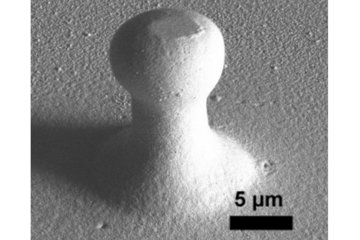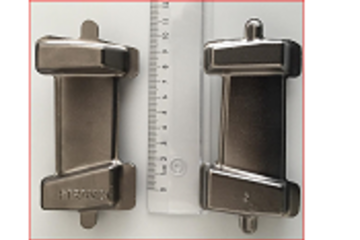All genres
61.
Journal Article
Effect of interstitial carbon on the evolution of early-stage irradiation damage in equi-atomic FeMnNiCoCr high-entropy alloys. Journal of Applied Physics 127 (2), 025103 (2020)
62.
Journal Article
Crystal–Glass High-Entropy Nanocomposites with Near Theoretical Compressive Strength and Large Deformability. Advanced Materials, 2002619 (2020)
63.
Journal Article
Grain boundary decohesion by nanoclustering Ni and Cr separately in CrMnFeCoNi high-entropy alloys. Science Advances 5 (12), eaay0639 (2019)
64.
Journal Article
Influence of phase decomposition on mechanical behavior of an equiatomic CoCuFeMnNi high entropy alloy. Acta Materialia 181, pp. 25 - 35 (2019)
65.
Journal Article
In-situ observation of martensitic transformation in an interstitial metastable high-entropy alloy during cathodic hydrogen charging. Scripta Materialia 173, pp. 56 - 60 (2019)
66.
Journal Article
Effect of hydrogen-induced surface steps on the nanomechanical behavior of a CoCrFeMnNi high-entropy alloy revealed by in-situ electrochemical nanoindentation. Intermetallics 114, 106605 (2019)
67.
Journal Article
Segregation-driven grain boundary spinodal decomposition as a pathway for phase nucleation in a high-entropy alloy. Acta Materialia 178, pp. 1 - 9 (2019)
68.
Journal Article
Competitive growth of nano-lamellae Nb/Nb3Si eutectics with enhanced hardness and toughness. Applied Surface Science 486, pp. 22 - 27 (2019)
69.
Journal Article
Hydrogen susceptibility of an interstitial equimolar high-entropy alloy revealed by in-situ electrochemical microcantilever bending test. Materials Science and Engineering A: Structural Materials Properties Microstructure and Processing 762, 138114 (2019)
70.
Journal Article
Invar effects in FeNiCo medium entropy alloys: From an Invar treasure map to alloy design. Intermetallics 111, 106520 (2019)
71.
Journal Article
Joint contribution of transformation and twinning to the high strength-ductility combination of a FeMnCoCr high entropy alloy at cryogenic temperatures. Materials Science and Engineering A: Structural Materials Properties Microstructure and Processing 759, pp. 437 - 447 (2019)
72.
Journal Article
On the mechanism of extraordinary strain hardening in an interstitial high-entropy alloy under cryogenic conditions. Journal of Alloys and Compounds 781, pp. 734 - 743 (2019)
73.
Journal Article
Metastability alloy design. MRS Bulletin 44 (4), pp. 266 - 272 (2019)
74.
Journal Article
Deformation-driven bidirectional transformation promotes bulk nanostructure formation in a metastable interstitial high entropy alloy. Acta Materialia 167, pp. 23 - 39 (2019)
75.
Journal Article
The Effects of Carbon on the Phase Stability and Mechanical Properties of Heat-Treated FeNiMnCrAl High Entropy Alloys. Materials Science and Engineering A: Structural Materials Properties Microstructure and Processing 748, pp. 59 - 73 (2019)
76.
Journal Article
Nonbasal Slip Systems Enable a Strong and Ductile Hexagonal-Close-Packed High-Entropy Phase. Physical Review Letters 122 (7), 075502 (2019)
77.
Journal Article
Interstitial equiatomic CoCrFeMnNi high-entropy alloys: carbon content, microstructure, and compositional homogeneity effects on deformation behavior. Acta Materialia 164, pp. 400 - 412 (2019)
78.
Journal Article
Hierarchical microstructure design to tune the mechanical behavior of an interstitial TRIP-TWIP high-entropy alloy. Acta Materialia 163, pp. 40 - 54 (2019)
79.
Journal Article
Selective laser melting enabling the hierarchically heterogeneous microstructure and excellent mechanical properties in an interstitial solute strengthened high entropy alloy. Materials Research Letters 7 (11), pp. 453 - 459 (2019)
80.
Journal Article
Beating hydrogen with its own weapons: nano-twin gradients enhance embrittlement resistance of a high-entropy alloy. Materials Today 21 (10), pp. 1003 - 1009 (2018)











